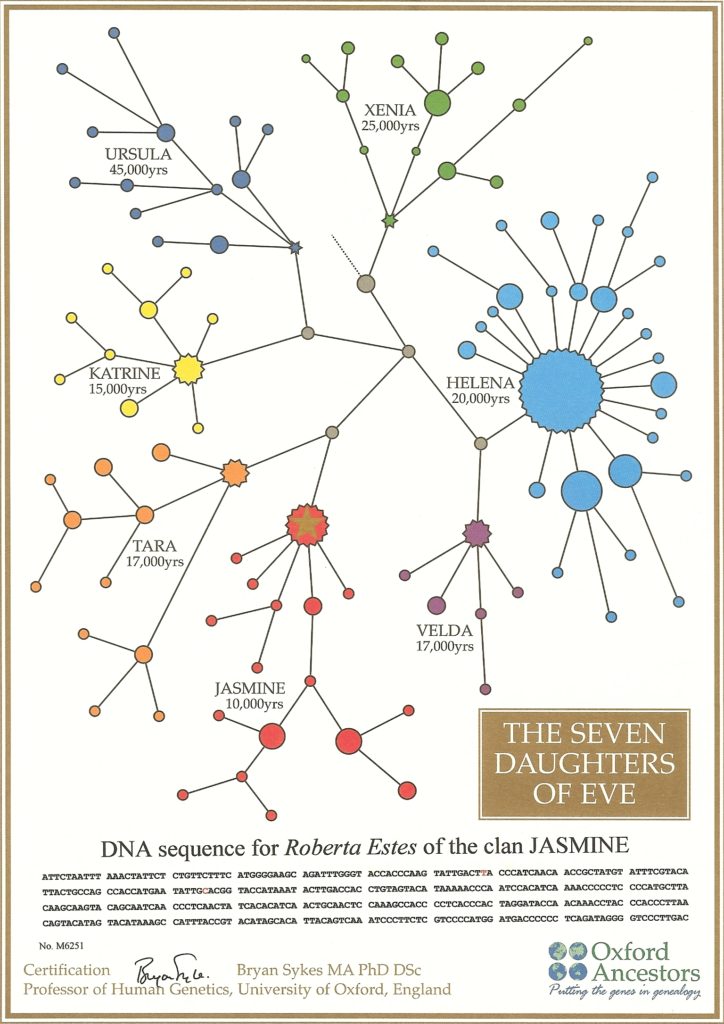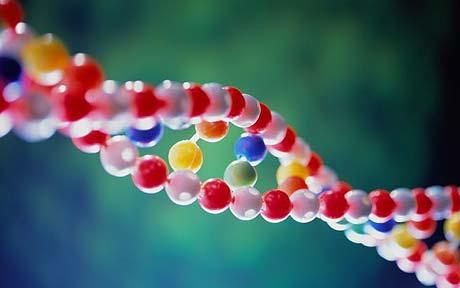Details, Details, Details
Critical Lens: In his book, Bryan Sykes does a lot of good things (see, “What’s the Verdict”), however, his book is far (and I mean far) from perfect. First of all, the title makes me cringe: for a book that only explores the origins of Europeans, it seems awfully problematic that the title be called the The Seven Daughters of Eve, as if there were only seven important women rearing our ancestry. Additionally, Sykes has a bit of a condescending tone in his descriptions of his contemporaries and even his team members. He also incorporates a plethora of speculative claims and anecdotes throughout the book (aside from his seven daughters imagination tangent), which if you are not careful, can be misleading. An example of this is throughout his discussion of the Polynesian people and their origins. Although he genetically proves their relatedness to Asia rather than South America, he goes on to narrate the sequence of events that led to their movement from Asia to the Polynesian islands. Except, instead of writing this in a way that clarifies his reliance on speculation, Sykes writes as if he just finished reading a detailed history of the Polynesians. Furthermore, Sykes has brief moments of head-shaking disappointment, such as when he describes the discovery and analysis of DNA and gives all the credit to none other than Watson and Crick, rather than also citing Rosalind Franklin. Lastly, it would not be unreasonable to question why Sykes transitioned to a heavily fictional style for the final third of the book. After all, it is supposed to be nonfiction and, quite honestly, usually when someone chooses to read a nonfiction book, it is because they want to read…well, nonfiction. Aside from these issues, Sykes really does do a good job. None of his claims or descriptions, to the best of my knowledge, are blatantly false or incorrect, and he supports his conclusions with, you guessed it, research!
What did I learn?
Oh boy, did I learn a lot. Having taken a few years-worth of Biology curriculum in high school and now college, much of the first third of Sykes book offered me little more than a basic recap of the concepts that I have learned over and over again since high school Biology. However, throughout the middle third of the book, I began learning all sorts of things. For example, I learned about what a scientific research process looks like in action, play-by-play, from the genesis of an idea to the defense of a conclusion. I found myself engulfed in Sykes’ anecdotal stories of the Polynesians, the last Tsar, and the Neanderthals. Pretty much everything Sykes discussed regarding the former two subjects was news to me, and although I had already learned about Neanderthals, I still managed to learn a thing or two. Lastly, and most importantly, I learned about how modern Europeans can each trace their ancestry back to one of seven women. This, in my opinion, is absolutely remarkable and quite simply brilliant, and I really do feel all the better for coming away with this knowledge.
What more?
In outlining Sykes’ journey in discovering the “seven daughters” of Europe, I really think that this book accomplished its goal. However, it ultimately leaves me wondering: what about the rest of the world? How many “clans” can be attributed to Africa or Asia? And how different does their mitochondrial DNA look from modern European DNA?
Should YOU read it?
- If you are curious about or interested in the thrill of cutting edge, novel research but are by no means an expert nor intend on becoming an expert, you would probably really like this book. The book offers a very digestible story-like structure following Sykes fascinating research into European ancestry. It never becomes too technical nor does it ever set out to cover every single, and yet it still offers a heaping serving of science!
- If you hate science, on the other hand…start liking it, and then read this book!
- If you are simply interested in the age-old question of “what is my origin,” you would also probably get a lot out of this book (well, unless you are anything other than European…yikes). Why, you ask? Well, because the book is literally about European ancestry. Please tell me you read at least some of my website.
- If you love some good ‘ol realistic fiction, read the last third of this book. It’s fiction, but based on a little bit of nonfiction: amazing!

